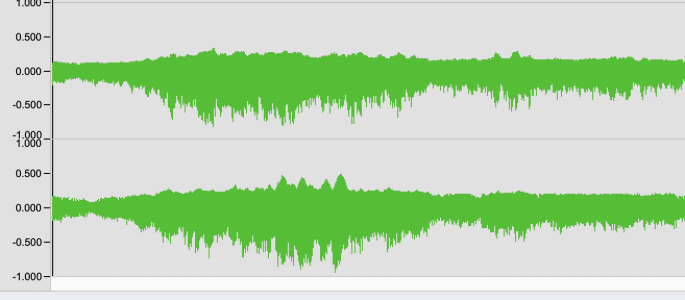Larpy
Member
Did some more snooping of my Eros with my new 'sillyscope. I've concluded that the model I bought cannot detect AC signals below 100mV. That means there's no way for me to adjust the level of an audio signal from my laptop into the Eros that matches the .4mv output of my cartridge.
But my tests the other day seemed to confirm that my Sowter SUTs are indeed amplifying the signal by a factor of 10.
So I decided to assume that the signal entering my Eros was .4mv and the signal after the Sowters was 4mv. Can't measure either, of course, because they're too low for my 'sillyscope to detect.
I plugged my turntable into the Eros and played the first few tracks of the Cardas test LP: a 1KHz tone and a 10Hz-30KHz sweep, both recorded (mastered?) at –14 dBs. As expected, my little scope detected nothing at the input of the Eros and nothing after the Sowter 1:10 SUTs, but I got a clear signal at the outputs:
1KHz tone: 1.8v p-p
frequency sweep: 1v p-p from 10Hz to about 150Hz, where it rose to 1.5v p-p. Stayed there until 7KHz, where it jumped to 2v p-p. 2.9v p-p at 11KHz, 3.5v p-p at 14KHz. Then back to 1v p-p at 15K and then rising to 1.5v p-p at 20K. I have no idea if this is expected behavior or not.
Then I decided to play a regular LP and measure the output of the Eros. Highest measurement after a couple of minutes of watching the 'sillyscope was 6v p-p. Is that normal and/or expected, given my cartridge's .4mv output?.
But my tests the other day seemed to confirm that my Sowter SUTs are indeed amplifying the signal by a factor of 10.
So I decided to assume that the signal entering my Eros was .4mv and the signal after the Sowters was 4mv. Can't measure either, of course, because they're too low for my 'sillyscope to detect.
I plugged my turntable into the Eros and played the first few tracks of the Cardas test LP: a 1KHz tone and a 10Hz-30KHz sweep, both recorded (mastered?) at –14 dBs. As expected, my little scope detected nothing at the input of the Eros and nothing after the Sowter 1:10 SUTs, but I got a clear signal at the outputs:
1KHz tone: 1.8v p-p
frequency sweep: 1v p-p from 10Hz to about 150Hz, where it rose to 1.5v p-p. Stayed there until 7KHz, where it jumped to 2v p-p. 2.9v p-p at 11KHz, 3.5v p-p at 14KHz. Then back to 1v p-p at 15K and then rising to 1.5v p-p at 20K. I have no idea if this is expected behavior or not.
Then I decided to play a regular LP and measure the output of the Eros. Highest measurement after a couple of minutes of watching the 'sillyscope was 6v p-p. Is that normal and/or expected, given my cartridge's .4mv output?.

